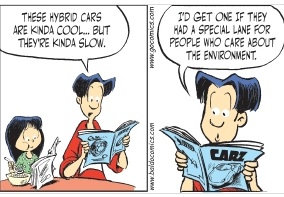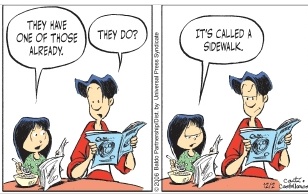The fundamental problem that bears repeating

1. While DC is a center city, not all of it is traditionally urban, as you think of places in the core of the city, or in the core of other center cities such as the boroughs of Manhattan and Brooklyn in New York City.
2. Plus, it's complicated by the fact that most people are imprinted by a suburban-style land use paradigm of detached housing, separated uses, relatively deconcentrated land use, and the necessity of automobiles to get to and from the various uses (home, work, shopping, school, entertainment).
People imprinted with the suburban mindset come here to live, and don't usually recognize that they are imprinted with a land use planning orientation that is inappropriate to the city.
3. But the third problem is that suburban areas, developed at a time when that wasn't necessarily the wrong choice for the town, are still suburban in a city that is urban, is growing in population, and that increasingly (not enough) recognizes that the city's future is best met by extending the urban orientation of built environment, rather than maintaining suburban patterns.
I don't favor takeover of land and massive upzoning of the kind that was done in the Wilson Boulevard corridor in Arlington. I am not criticizing what they did, but I don't think it's the right choice for extant neighborhoods.
That being said, there are usually opportunities for selective and appropriate infill projects, some such as the Armed Forces Retirement Home or land acquired from the AFRH by Catholic University, or the EYA housing development at St. Paul's College, that can extend the urban orientation of the built environment, in areas where the prevailing development has been campus-like or suburban.
Other areas where it is appropriate to redevelop include parking lots, air space above one story shopping centers, adjacent to transit stations, and in commercial districts.
4. The issue in Greater Brookland comes down to a suburban orientation on the part of a great number of residents, and an unwillingness or failure to recognize that this pattern needs to be reconsidered, since it is the 21st century, not the 19th or 20th centuries.
5. Preserving "open space" first and foremost isn't necessarily the best "environmental" choice when that space promotes and encourages automobile dependence and energy use.

Baldo comic strip, 12/2/2006. Frames 1 and 2, and 3 and 4.
6. This is why it's better to take the time and explain planning concepts, lay out alternatives, and set longer time frames when doing public participation within planning studies, especially when you are asking people to support significant change in the built environment and maybe even in their own lifestyles.
A particular good set of materials are the chapters in Trans-Formation: Recreating Transit-Oriented Neighborhood Centers in Washington, DC published by the DC Office of Planning in 2002.
I think that the Transit Oriented Development term is overused. As the back and forth over the Purple Line proves, many people complain that transit oriented development is an unearned gift to developers, without recognizing that appropriate density helps us get more of what we want in a livable city such as:
• more tax paying residents;
• more residents supporting our local businesses in our local business districts;
• more residents riding transit making it more profitable and efficient to add more frequent transit service;
• more eyes on the street helping improve safety;
• more people able to be involved and participating in local civic affairs, etc.
I think that many of the sections from Trans-Formation and other publications should be made up into poster boards, and taken up and displayed at most every public planning meeting, in order to explain some of the most basic concepts of livability and urbanism.7. With regard to Brookland, one of the problems there with ANCs actually is a benefit. As a Main Street Manager there, I thought it was a problem that Brookland is included in each of Ward 5's Advisory Neighborhood Commissions (most of 12th Street is in 5A, but the lower part is in 5B, and the part west of the railroad tracks is in 5C), although most of the most voluble Brooklanders live in ANC5A. It happens that most of the opportunity for development in this part of the city lies in ANC5C. The 5A people could maybe get party status on some of the proposals, but they are not likely well enough organized and capable to do so.
Labels: sustainable land use and resource planning, urban design/placemaking, urban vs. suburban



0 Comments:
Post a Comment
<< Home